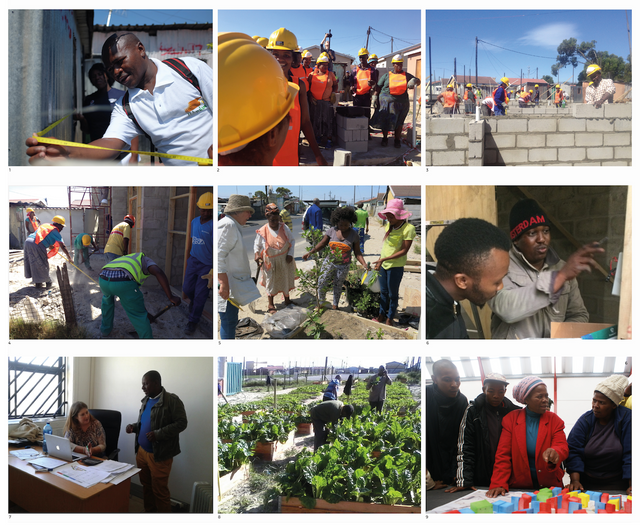
In our last post we shared a visual glossary of terms with you on principles that you’re likely to come across in our Steemit blog. These terms gave a brief insight into the core principles of the EMPOWER project. We’re sure that you’ve noticed our constant emphasis on our approach to design being one of collaboration and pluri-disciplinary engagement. In light of this, today’s post will focus on the various collaborators in the EMPOWER project. By giving you a look into the growing spectrum of involvement in the project, we hope to invite and encourage discourse and skills exchange amongst the Steemit community that may spark opportunity in the network of involvement and fuel the continuation of the project. More importantly, we are constantly opening our eyes and minds to the emergent and various ways of thinking in innovative communities that may drive new ideas in ways in which we could have never thought.
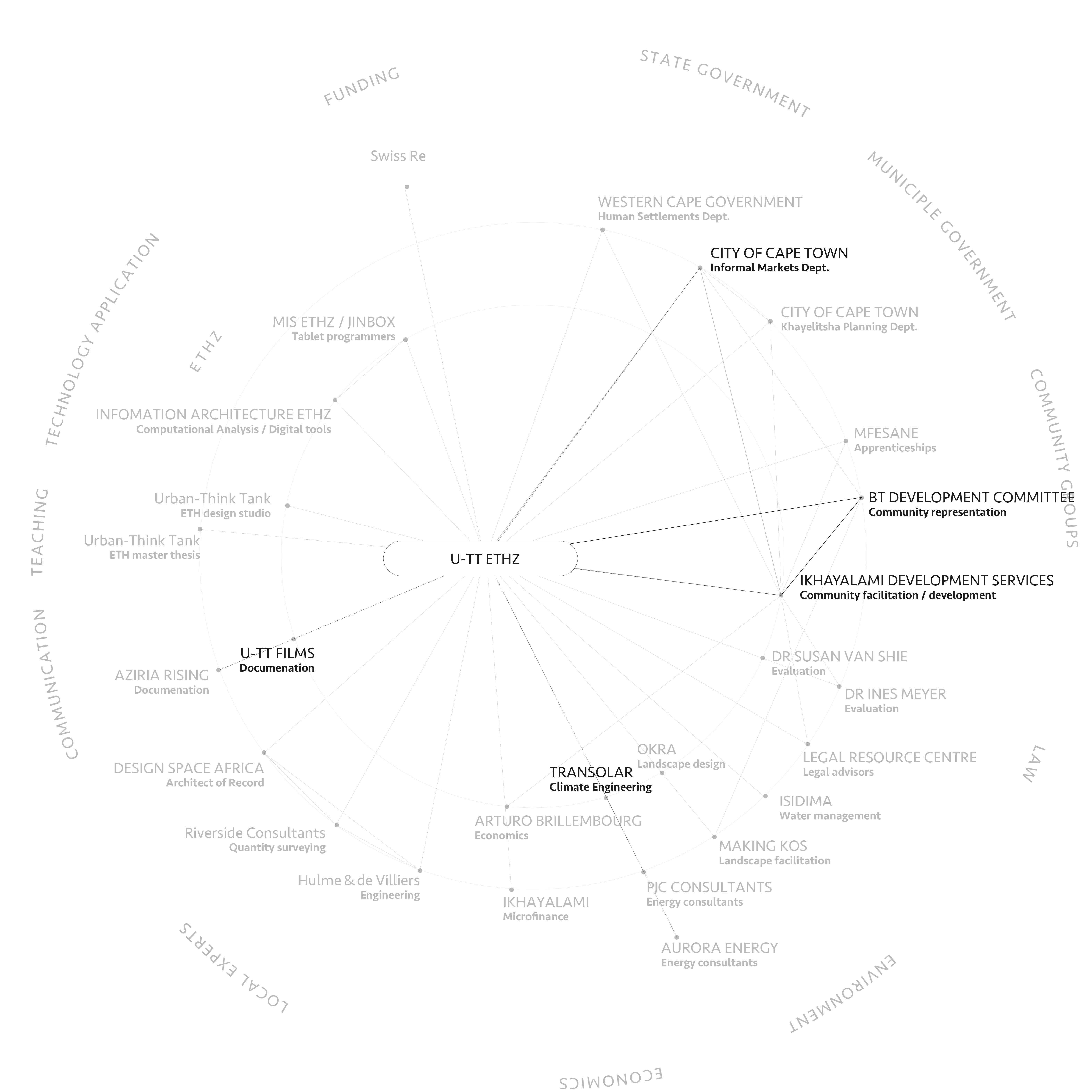
- Image: collaborator network of EMPOWER project at conception | U-TT
There are many collaborators involved in the EMPOWER project, and their specific contributions will begin to unravel throughout our series, however in this post, we will be introducing how the EMPOWER project came to life and in doing so will introduce the main collaborators. Welcome to the (growing) network…
##The main collaborators
Meet U-TT…
In 2012, U-TT encountered the massive informal settlement of Khayelitsha in Cape Town. Driven to using design as a tool for social impact, we became invested in addressing the poor quality of life that many South Africans face today, Khayelitsha, like many other informal settlements, is overcrowded with people waiting for RDP housing. The aims of the RDP sought to provide subsidized low cost dwellings on a large scale to citizens who meet the qualifying criteria. However, countless low-income are shut out of the formal housing market and financial lending institutions and, while in the waiting list for an RDP house are forced to call the informal settlements home. During our first visit to Cape Town, we observed that going vertical, as a housing design approach was something being done by locals in the form of two-story shacks. After a series of interviews and engaging with the community, we came to understand that people needed more space because of an overcrowded environment and with increased space lies opportunity for commercial and income activity. Understanding the community was therefore quintessential to founding and fueling EMPOWER.
Video:
Meet Ikhayalami…
Through Joel Bolnick, coordinator for the secretariat of Slum Dwellers International (SDI), we were introduced to local South African NGO, Ikhayalami. Ikhayalami similarly aims to develop affordable spatial and technical solutions for Informal Settlements. Our conversation with Ikhayalami revealed how current housing provision approaches are responding poorly to the context, which essentially created a collaborative relationship for rethinking approaches. Because Ikhayalami work directly in the context of Khayelitsha, they constantly act as a local microphone for the community bridging formal and informal organization.
Meet the community…
Through Ikhaytalami, we were able to extend the network and include the BT Section community. In doing so, Phumezo Tsibanto, a local community leader and representative of the BT Section Development Committee set up for the project. Phumezo is a fundamental collaborator in that he mediates between the project partners and the greater community by projecting the specific challenges, needs and preferences that people face on a daily basis in BT. Phumezo has also played a fundamental role in the design and planning process of the EMPOWER live prototyping project.
- Image of BT community using models as re-blocking design process with architects | U-TT
Essentially, through self-initiative, these three collaborators marked the beginning of the network and by coming together catalyzed a series of prototypes to come.
Coming together to catalyze!
Having observed this informal design approach of going vertical in the townships, the main collaborators began speaking to the residents of BT to understand the thinking behind the approach. The answer to having another floor was the simple desire for more space. It was evident at this point that there was plenty to be learnt and explored creatively for a prototype project to be developed in Khayelitsha which would constantly be informed by those who live in the area. It was decided that a workshop space would be needed to share ideas and furthermore develop promising ideas. A team from Ikhayalami and Phumezo joined 24 international students and guests in Glarus, Switzerland for a summer school in 2013. This space of participation honed in on the design skills of students with pertinent contextual critique from local community representatives. The intention of the workshop was to develop a design response to the brief developed together with the BT Leadership Committee. This summer school proved to be a valuable educational exercise and more so maintained the EMPOWER approach of focusing on the process more than the product with awareness of inclusivity, varying positions and pluri-disciplinary knowledge building.
These ideas were then further refined after the summer school in preparation for on-the-ground intervention live prototyping in Khayelitsha. Phumezo was happy to use his plot as the land on which the first EMPOWER prototype would be built.
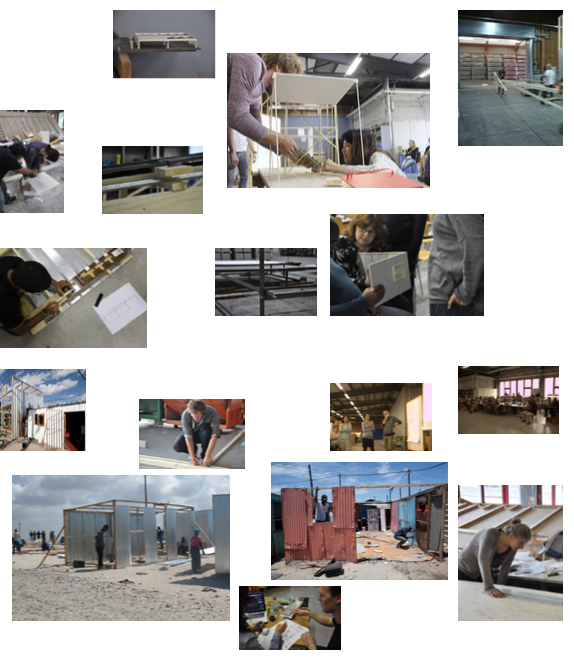 !
!
- Image: Summer school showing various collaborators exchanging and exploring ideas for prototype housing | U-TT
Getting on the ground! Building up!
Two months following the workshop in Glarus, U-TT secured a private grant to subsidize the material costs of a new two-story shack prototype. The idea was proposed to Phumezo who was interested in testing out a refined prototype during the workshop. Over a period of four days during December of 2013, a team of 6 people comprised of Ikhayalami local builders, local activists and Phumezo assembled the first EMPOWER prototype in Khayelitsha.
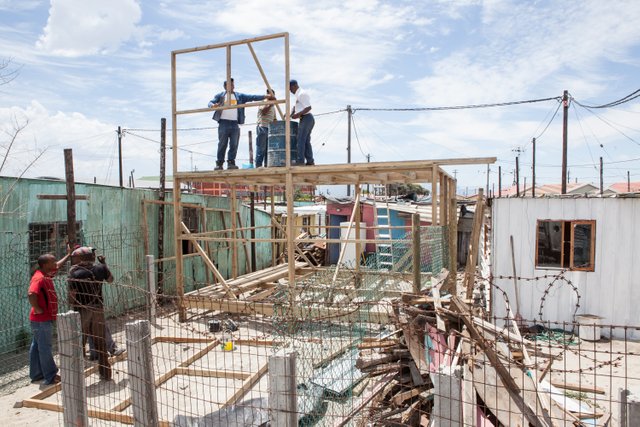
- Image: first prototype construction with local building initiative | U-TT
Extending the network
Once the prototype was built, the response from the local community to Phumezo was positive, with many asking for guidance on how to construct two-story structures of their own. This furthermore revealed a design deficit that could be filled in, through the collaborative project. We discovered an interest in what could be more than just the RDP. At this stage, the conversation was extended to the local government with aims to begin making significant real life impact. EMPOWER began to address planning processes, land redistribution methods, suitable economic models and sustainability tools all through collaborative initiative. The first housing unit was a sign of action that ignited a conversation with the government and greater public on living standards, ownership and planning processes.
The network continues to grow. The first “unofficial” prototype described in this post, in retrospect, was a prelude to the many EMPOWER prototypes to follow.
Stay tuned for our next post, which will launch the EMPOWER story.
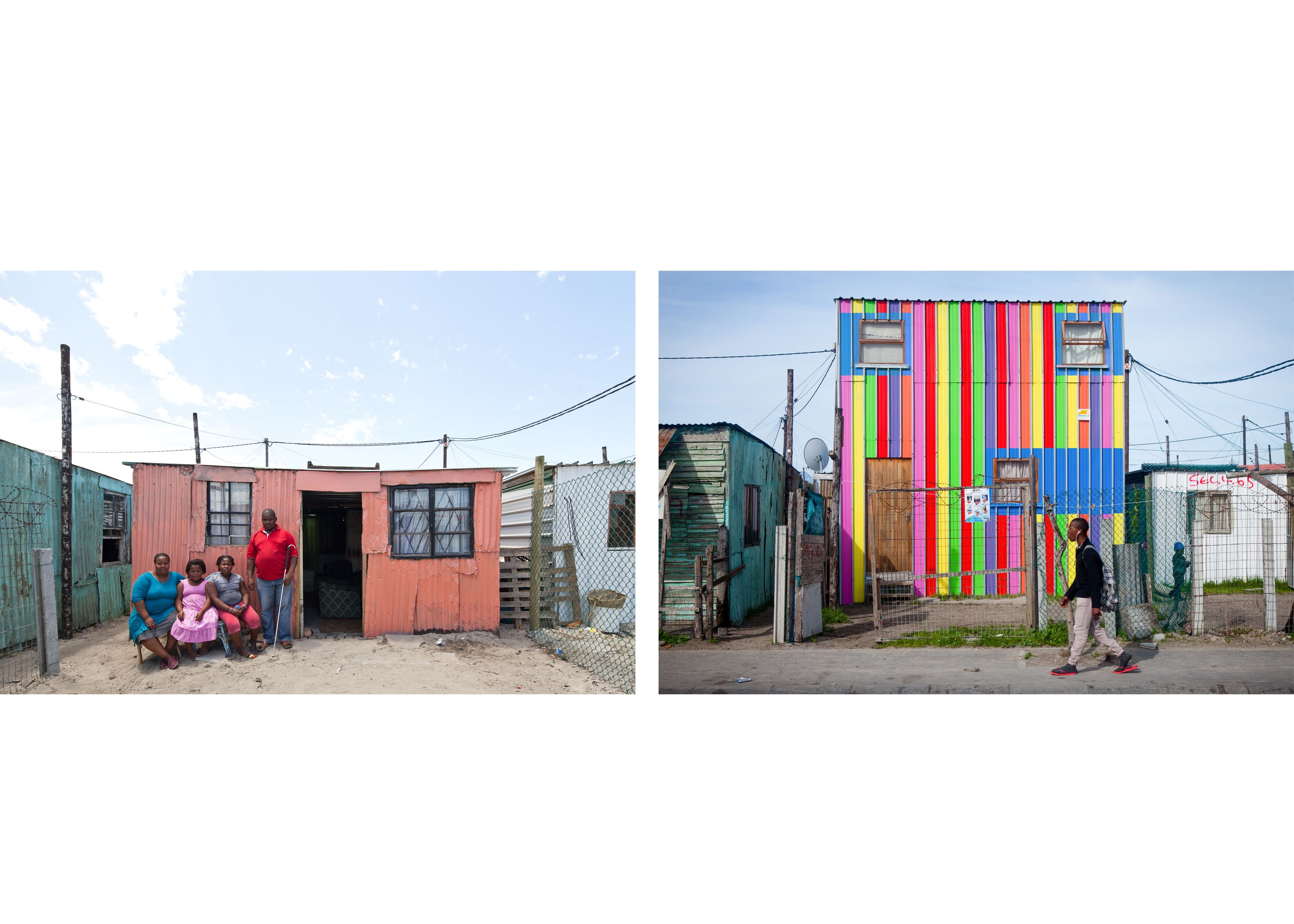
Get to know about the project at:

Hi @urban-thinktank. Thank you for introducing the Empower team both in and around Khayelitsha! Can't wait to learn about the story coming next :)
Downvoting a post can decrease pending rewards and make it less visible. Common reasons:
Submit
what help is a friend
Downvoting a post can decrease pending rewards and make it less visible. Common reasons:
Submit